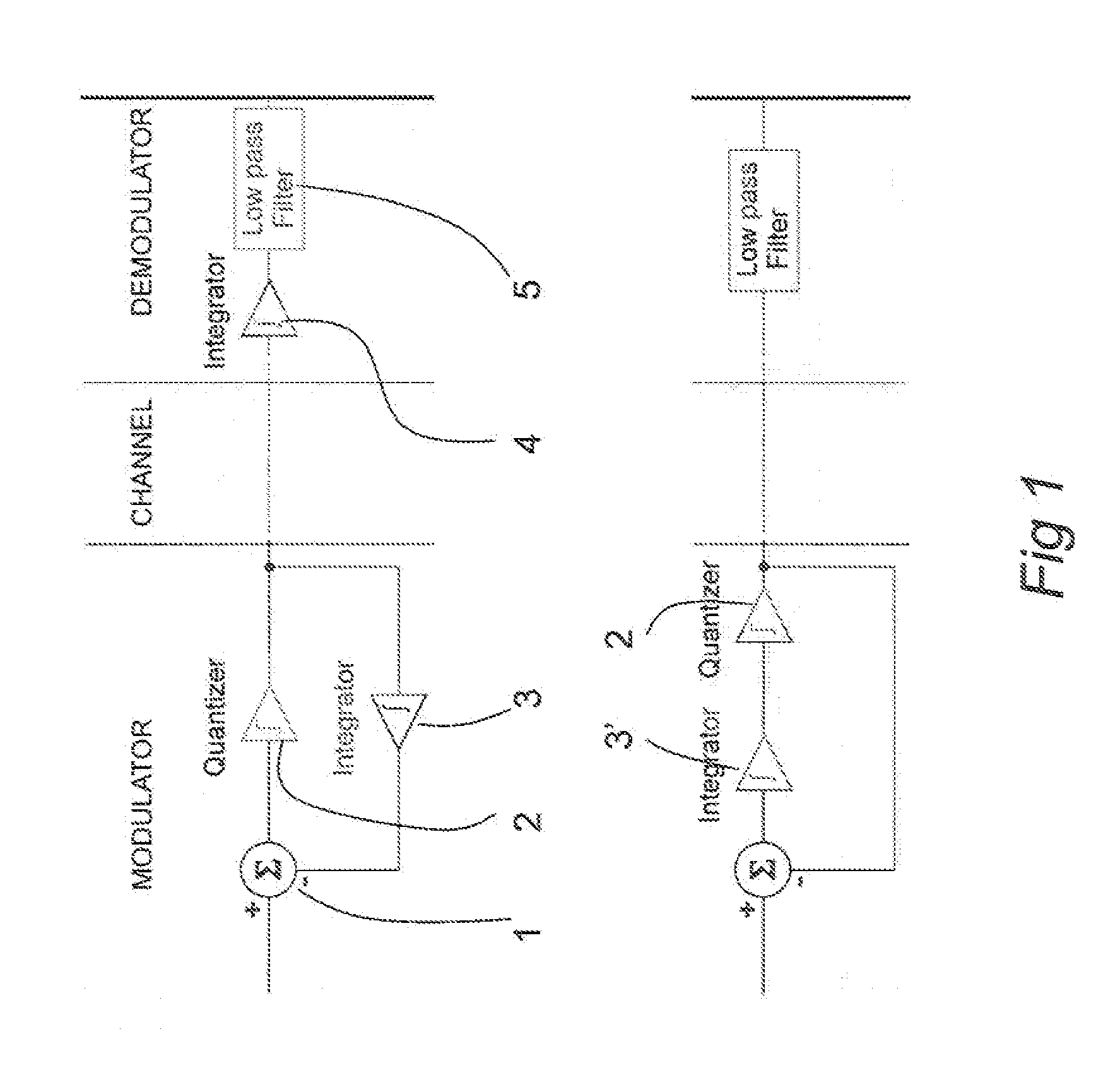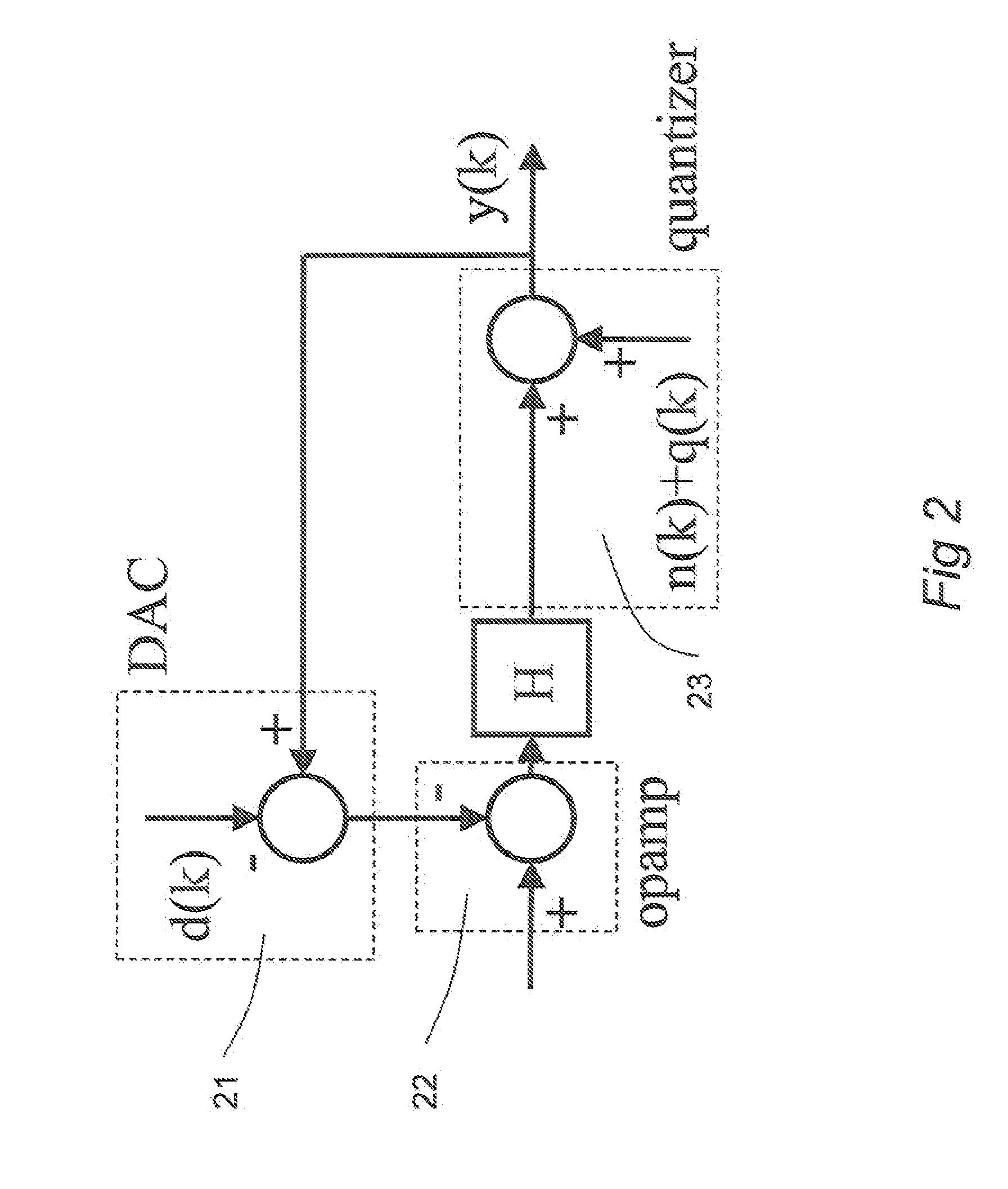Method to linearize the output from an ADC
a technology of linearization and output, applied in the field of analogtodigital converters, can solve the problems of insufficient testing to measure adcs with dynamic errors like hysteresis, exposure of wide-band receivers, and degradation of linearity
- Summary
- Abstract
- Description
- Claims
- Application Information
AI Technical Summary
Benefits of technology
Problems solved by technology
Method used
Image
Examples
Embodiment Construction
[0032]The ADC output signal during a training phase has a finite length; that during the operational phase has a semi-infinite length. For a block of samples of the signal x(k), k=0, 1, . . . , the vector notation {right arrow over (x)}=(x0, x1, . . . , xN−1) will be used. The corresponding fast Fourier transform (FFT) spectrum is denoted {right arrow over (X)}=(X0, X1, . . . , XN−1). δ(k) is the Kronecker delta function, such that δ(k)=0, except for δ(0)=1.
[0033]We assume that the impulse response h(k) of the ΣΔ-loop filter satisfies h(k)=0 for k=0, −1, . . . due to causality and a minimal one unit delay in the loop. Truncate the estimate of h to at most P non-zero (complex) samples, such that
h(k)=0 for k=P+1, P+2 . . . .
[0034]The transfer function of the loop is denoted H=FFTN(h).
[0035]FIG. 2 depicts the additive errors due to mismatch in the quantizer and DAC inside a ΣΔ feedback loop.
[0036]In FIG. 2 the DAC 21 introduces, negatively, an error d(k); this error is fed through the ...
PUM
 Login to View More
Login to View More Abstract
Description
Claims
Application Information
 Login to View More
Login to View More - R&D
- Intellectual Property
- Life Sciences
- Materials
- Tech Scout
- Unparalleled Data Quality
- Higher Quality Content
- 60% Fewer Hallucinations
Browse by: Latest US Patents, China's latest patents, Technical Efficacy Thesaurus, Application Domain, Technology Topic, Popular Technical Reports.
© 2025 PatSnap. All rights reserved.Legal|Privacy policy|Modern Slavery Act Transparency Statement|Sitemap|About US| Contact US: help@patsnap.com



